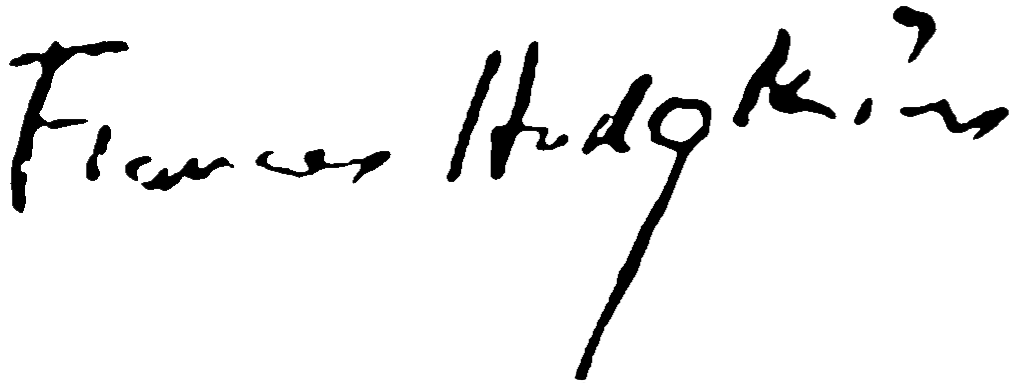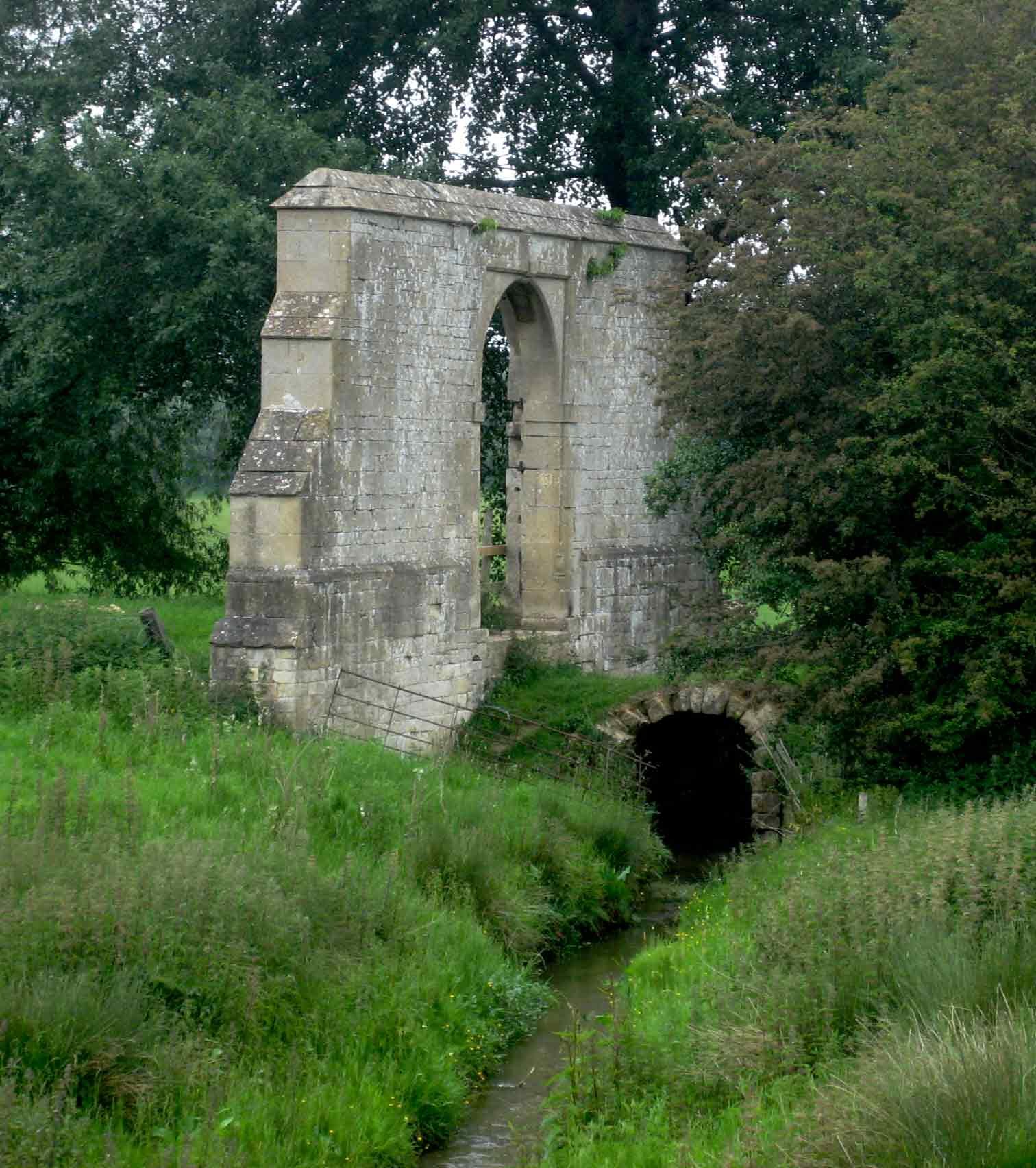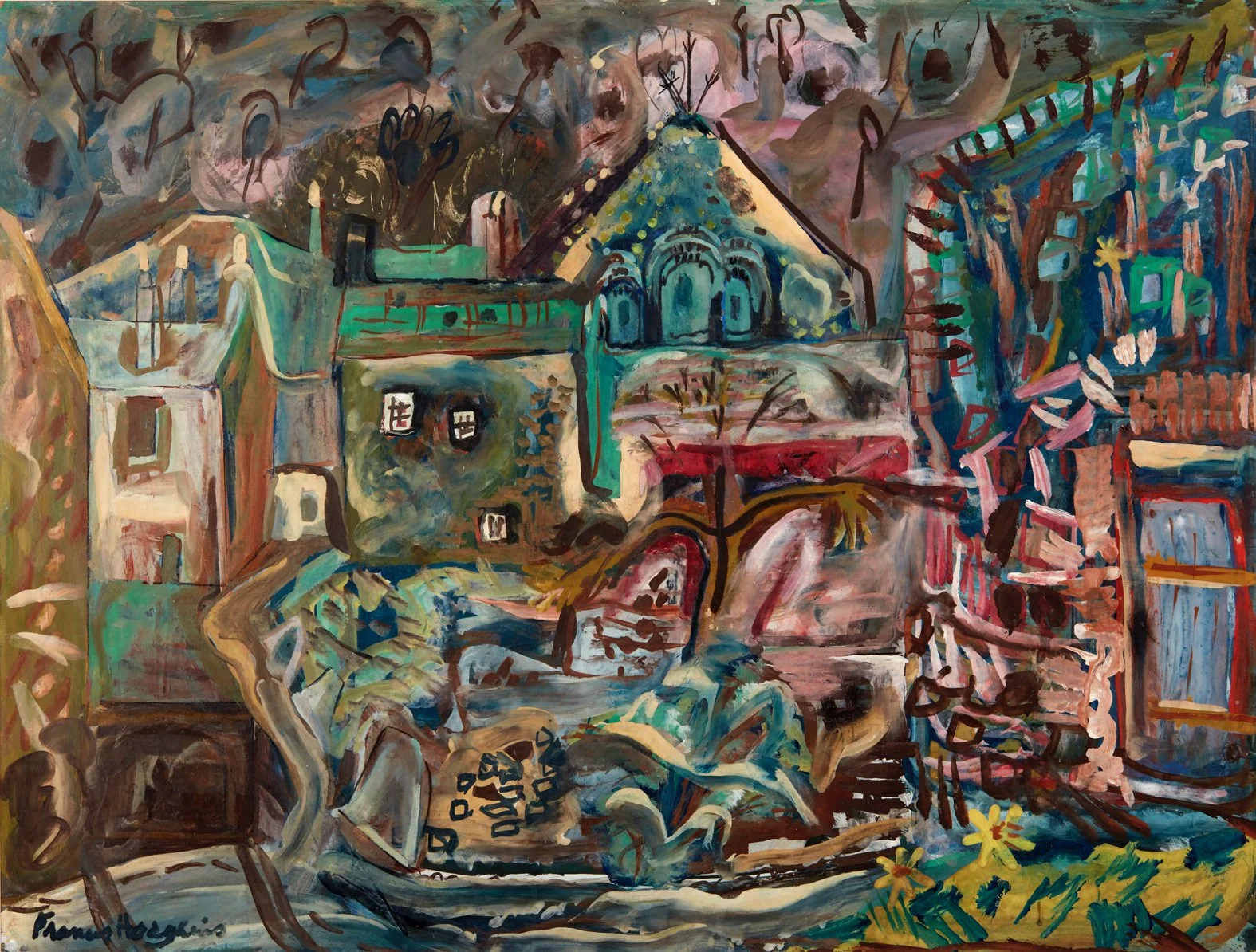From Frances Hodgkins to Lucy Wertheim, 13 February 1928, Hotel Moderne, Martigues, Bouches du Rhone, France
“... I am wayward - what artist worth his salt is not? but au fond - deep in my work - I am steadfast & steady as a rock - I have changed & evolved & experimented - but am none the worse for that. My present work is consistent - I shall sink or swim by it - I think swim.”
It is springtime in the Cotswolds as I drive from Stow-on- the-Wold along lanes edged with dazzling white blossom of hawthorn hedges and descend into Burford’s main street of honey coloured stone houses. Over the medieval packhorse-bridge I turn left into Lawrence Lane and hold a 1920s postcard up to the scene. The church with its tall spire still dominates the view but to the left I realise the old stone wool barn that Frances Hodgkins made her home and studio in 1922 has been replaced by a modern house.
Lady Juliana's Gateway, Chipping Campden
Perpetually short of funds Hodgkins could barely afford to heat her studio and feed herself at the same time. In winter she would walk a seven mile loop through the nearby villages to keep warm. In the evening spring sunshine I retrace her walk from her studio through Taynton, Great Barrington, Little Barrington, past the Fox Inn and along the Windrush Valley back into Burford. Frances Hodgkins first came to Burford in 1917 and then again in 1922, whilst supplementing her living by taking painting classes, she cemented friendships with pupils such as Amy Krauss, Dorothy Selby, Hannah Ritchie and Jane Saunders; close bonds that were to last her lifetime.
I was born and raised in the Cotswolds and having moved to New Zealand I opened my gallery in the 1980s, specialising in the repatriation of artworks by New Zealand artists. Frances Hodgkins soon came to my attention. As I continued to buy and sell more of her work, I realised that we shared a common personal bond with the West Country. Researching the locations of her studios and paintings became a fascinating hobby and was a very worthwhile pursuit that led to dedicated annual field trips over the past 30 years.
This is my fifth catalogue exhibition dedicated to Frances Hodgkins since 2008 and as such I thought that writing the usual biography to preface the catalogue was not necessary as each previous biography is available on our website.
The adventures have been many and varied. In order to find the location of Hodgkins’ 1916 watercolour Lady Juliana’s Gateway (FH0597, Private Collection) in Chipping Campden I had to walk across two muddy fields and a stream to discover the overgrown ruin described by Frances Hodgkins in 1916, “I am on a large picture of bathing boys. There is a pool in one of the fields, rather public and I have to dodge the villagers … who suspect I have some stunt up my sleeve.“
In 1943 the roof had fallen off Hodgkins’ Corfe Castle studio, dislodged by the constant vibration of Allied tanks and armour moving through the narrow streets, so she went to stay at The New Inn at Cerne Abbas. There she made several paintings of the Tithe Barn and cottages in the village. Whilst searching for Hodgkins’ Tithe Barn, Cerne Abbas (FH1228, Private Collection) I rounded a corner on what I thought was a public footpath to find myself standing on the owner’s croquet lawn. As the front door burst open I promptly introduced myself and explained my purpose and within minutes we were sitting at a table on the terrace sharing coffee and convivial memories of trips to New Zealand.
In 1929 Arthur Lett-Haines introduced Frances Hodgkins to Geoffrey Gorer, Geoffrey’s mother Rée and brothers Richard and Peter, who all became lifelong supporters and friends and later owned many of her finest works. Rée Gorer nursed Hodgkins back to health when she suffered from laryngitis in 1937. In 1939 Frances wrote to Dorothy Selby, “Mrs Gorer has persuaded me to go on a motoring trip through France - to the South of it - leisurely - stopping at places off the beaten track & having, incidentally some good food and wine - on the road - we should be away from 2 to 3 weeks.”
This friendship with the Gorers enabled Frances to spend an extended amount of ‘quiet time’ at Geoffrey’s cottage The Croft at Bradford on Tone, especiallyduring the turbulent war years when coastal gunfire in 1940 rattled, not only her Corfe Castle studio windows, but also her own nerves.
On my visit to Bradford on Tone, finding The Croft was a relatively easy proposition, but finding the location of her 1939 watercolour River Tone, Somerset (FH1178, Private Collection) involved visiting two farmyards, a ‘stand-off’ with a massive 4 wheel drive tractor on the narrow village bridge, and a walk along the river bank in both easterly and westerly directions. Eventually I entered a field along a public footpath which I soon discovered led directly from Geoffrey Gorer’s back orchard (where Frances painted Cherry Tree at The Croft FH1252, Museum of New Zealand Te Papa Tongarewa) and followed along the bank of the river Tone. As I walked along the path the rumble of cascading water grew louder until, through the brambles, stinging nettles and willow trees I spotted the weir, pool and sluice gate that appeared not only in my painting, but also many other works of that location.
The village of Corfe Castle, of all the places she lived, is most closely associated with Frances Hodgkins and her time in England. Situated on the Isle of Purbeck in Dorset, historic Corfe Castle is known primarily for the ancient castle ruins that sit on top of the hill immediately behind the village. Hodgkins relocated to Corfe Castle in the hope of finding a peaceful refuge in the countryside and to reconnect with her friend from Burford, the potter Amy Krauss, who had built a house and potters barn in East Street. In between trips to Europe Hodgkins returned regularly to the village.
Frances Hodgkins with kitchen objects, Corfe Castle village, Dorset
In 1936, whilst staying with Krauss in East Street, she set up a small studio nearby in a converted Wesleyan chapel in West Street rented from the Glaswegian artist Francis Newbery who also lived in the village. In 1940 Hodgkins took an adjoining courtyard cottage making it her home. It was in this studio that she painted these seminal works that were to be exhibited in the British Pavilion at the Venice Biennale.
I stayed in various farm cottages and hotels in Corfe Castle for a week at a time over three consecutive summers in order to immerse myself in this unspoilt village little changed from the 1940s. One morning I noticed the local grocer delivering provisions to the front door of what was Hodgkins’ cottage and decided to introduce myself to the owner. What followed was a conducted tour of Hodgkins’ lodgings upstairs and downstairs and finally into the sitting room where I was surprised at the size and location of the massive arched light filled windows, and immediately realised it was indeed the old chapel studio. We took coffee in the courtyard next to the steps from which John Wesley preached to his faithful in 1774, and these same steps are clearly visible in Hodgkins’ 1942 gouache Courtyard, Corfe Castle (FH1214, Art Gallery of New South Wales).
In 1945 Hodgkins had reluctantly agreed to pose in her studio for the Vogue photographer Felix Man and it was with much trepidation that I stood before the samefireplace in her studio to have my own photograph taken. On another day whilst loitering on the banks of the castle ruins trying to locate the scene of Felix Man’s photograph of Hodgkins in exactly the same location with the village behind her, a lady about the same age as Hodgkins was in 1945, rested on a large stone from the castle wall as a younger lady walked briskly up the path towards her. In an instant I had recreated Man’s iconic photograph.
The Welsh fishing village of Solva lies on the Pembrokeshire coast near St Davids where the mouth of the river Solva meets the ocean. The area has been occupiedsince the Iron Age and was a popular site of plunder for the Vikings. In September 1936, on the recommendation of Cedric Morris, Hodgkins visited Solva with her friend Dorothy Selby staying at The Cambrian Inn. In November that year she wrote to Duncan MacDonald, co-director of the Lefevre Galleries: “I have been working moderately hard, moderately successful in a landscape of steep valleys speedy rivers & castles looking like their own mountains … Such nice gentle people I was among at Solva, mostly bird watchers & such all terribly poor.”
Frances Hodgkins, Methodist Chapel
Hodgkins painted several works of Solva and the neighbouring village, Middle Mill. Two notable paintings of Solva, the gouache Methodist Chapel (FH1128) and the large oil painting Middle Hill (FH1097) were amongst the 26 works selected by Sir Kenneth Clark to represent Britain at the 22nd Venice Biennale.
As I walked over the bridge entering Solva I noticed that, like Hodgkins beloved Corfe Castle, Solva has changed very little since the 1930s, so I felt confident that I would be able to identify many of the buildings featured in her gouache Methodist Chapel. There facing me was The Cambrian Inn and to the left was theMethodist Chapel, both still looking as they were 90 years ago. Job done! Known as The Old Chapel the now deconsecrated Gothic building has become an artgallery and cafe, the Raul Speek Gallery.
A quick coffee with the charismatic Raul and then off to The Cambrian Inn for lunch. When I showed the landlord my photograph of Hodgkins’ painting and asked about the absence of the house on the right by the bridge he rushed off and brought back a 1920s photograph of the Inn and Chapel with a house standing to the right and explained that the house had been demolished after WWII to make way for a car park, and promptly gave me the photograph for my archives. Such nice gentle people I was among at Solva.
The exhibition included three excellent Spanish paintings of Ibiza and Tossa de Mar. This is personally uncharted territory, so I am now planning my next odyssey,but in the meantime I would like to thank Mary Kisler, who has enthusiastically shared her extensive knowledge of Frances Hodgkins in our preparation for this exhibition.
- Jonathan Gooderham





